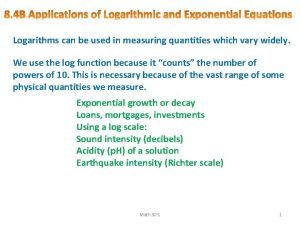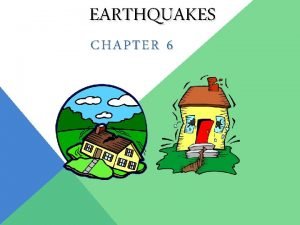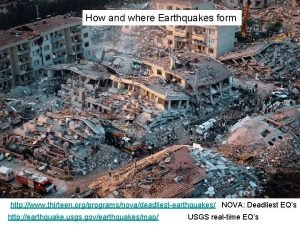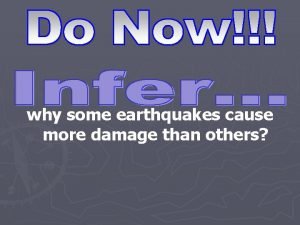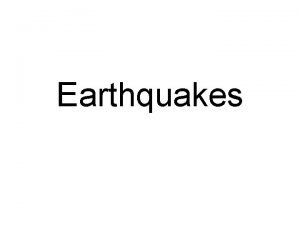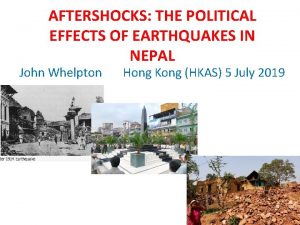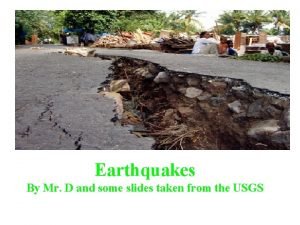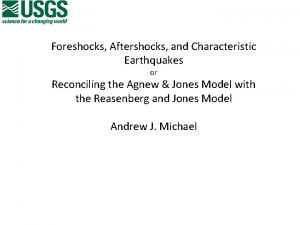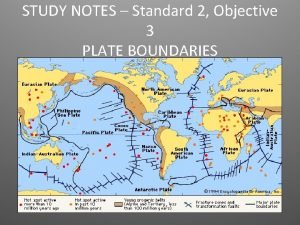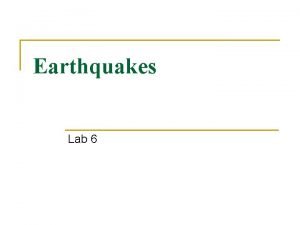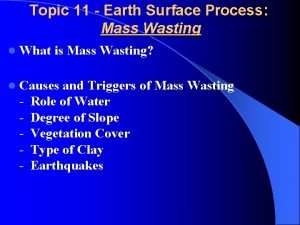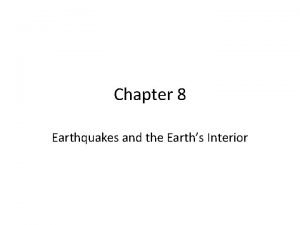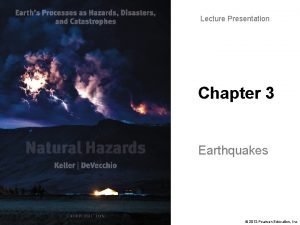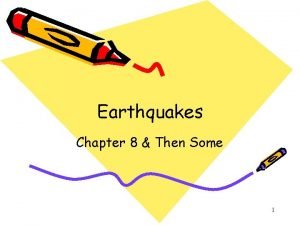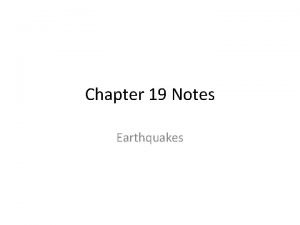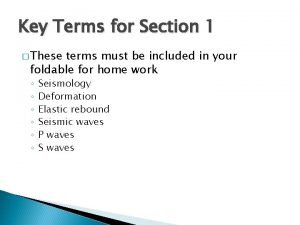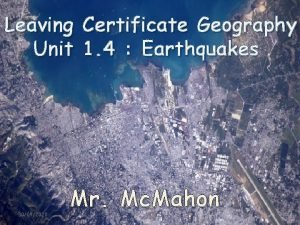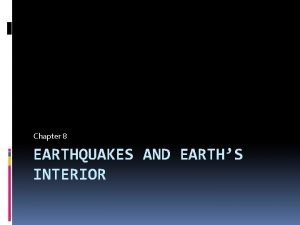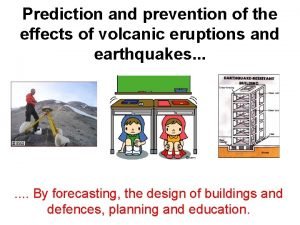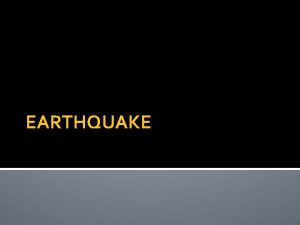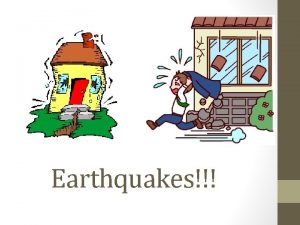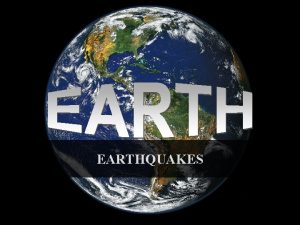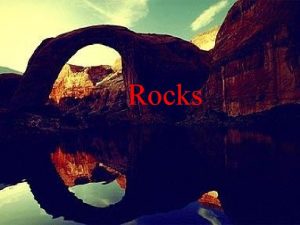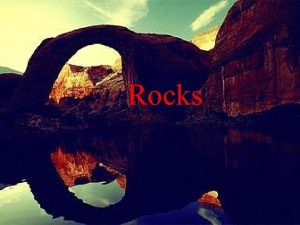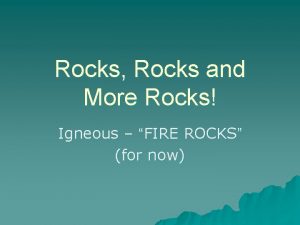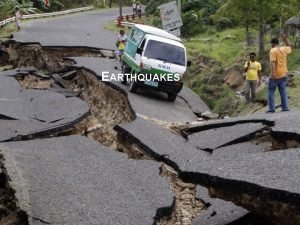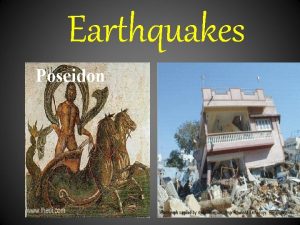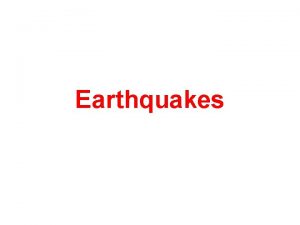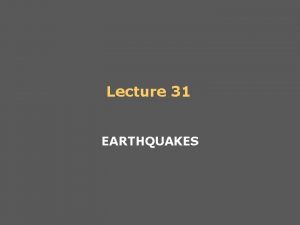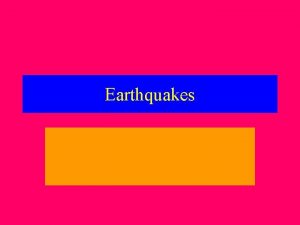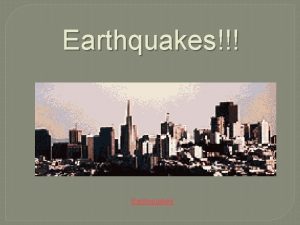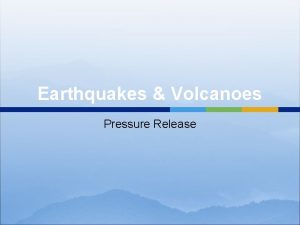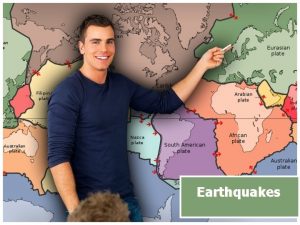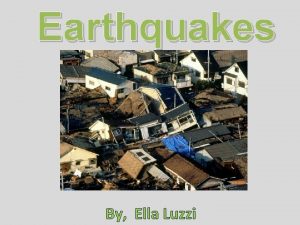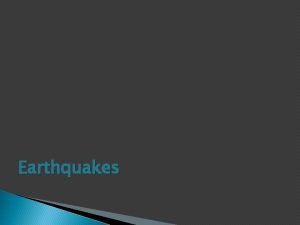Earthquakes What is an Earthquake EarthquakeOccur when rocks































- Slides: 31

Earthquakes

What is an Earthquake? • Earthquake--Occur when rocks under stress shift along a fault (energy released) • Fault—break in rock where one block moves relative to another

Let’s Build a Fault Model!

Damage from Northridge Earthquake in Southern California--1994



Anatomy of an Earthquake • Focus--1 st motion of earthquake in Earth, along fault • Epicenter—point on Earth’s surface directly above focus • 90% of continental earthquakes have shallow focus—most damaging

Parts of an Earthquake

Elastic Rebound — sudden return of deformed rock to undeformed shape Elastic rebound causes earthquakes

Fence offset due to Elastic Rebound

Seismic Waves • When rocks on a fault move, they release energy as seismic waves • Seismic waves travel outward from the focus in all directions

Body wave—seismic wave that travels thru a medium –two types: P-wave & S-wave

Seismic Waves • P (primary) waves are the fastest & travel thru solids, liquids, & gases

Seismic Waves • S (secondary) waves are 2 nd fastest & travel thru solids only. Although slower they can cause the most damage

Seismic Waves Surface wave— a seismic wave that travels along surface of medium. These are S & P waves that reach the surface & can cause greatest damage

Water Wave and Slinky Activities!

WAYS TO MEASURE AN EARTHQUAKE • There are two major scales to measure an earthquake: – Mercalli Scale: measures earthquake intensity (by amount of damage caused) – Richter Scale: measures earthquake magnitude (strength)


Studying Earthquakes • Seismology— study of earthquakes & seismic waves • Seismograph— records vibrations in ground • Seismogram— tracing of EQ motion, recorded by seismograph

Bill Nye on the Richter Scale http: //www. youtube. com/watch? v=1 qbg 7 orb 1 lc Bill Nye on Waves Earthquake recording station/seismograph clip http: //www. youtube. com/watch? v=dx 4 Oq. T 0 PYn. U&lr=1

SEISMOGRAM Order of recording: P-waves, S- waves, then surface waves • Shows S-P lag time

P-Wave S-Wave P-Wave • To find S-P lag time, subtract where the P wave starts from where the S wave starts (S-P = Lag Time)

What is S-P lag time for El Paso, TX? • 28 sec – 0 sec = 28 sec lag time What is S-P lag time for San Francisco, CA? • 120 sec – 0 sec = 120 sec lag time What is S-P lag time for Seattle, WA? • 165 sec – 0 sec = 165 sec lag time Which city is closest to the epicenter? • The city with the shortest lag time is closest to the epicenter, so it’s El Paso, TX

Locating Earthquakes Through Triangulation • S-P lag times are analyzed to find the epicenter of Earthquakes using 3 stations • Why 3 stations? Epicenter • Because all we know is distance, so it takes 3 circles to narrow it down to one point

Let’s stop here and practice finding S P lag time

Fault Zones • Fault zone —region w/ lots of faults that typically form at plate boundaries • Fault zones and earthquakes can occur away from plate boundaries as well

Fault Zones—New Madrid • New Madrid fault line—New Madrid, MO— 120 miles southward on I-55 • 1811/1812—most widely felt series of E. Q. in U. S. history (2000+) • Five were 8. 0+ • Ancient fault zone deep in crust of Mississippi River region


Tsunamis • Tsunami—giant ocean wave that forms after volcanic eruption, submarine earthquake or landslide • May form when ocean floor rises due to earthquake Tsunami animation http: //embc. gov. bc. ca/em/tsunamis/cause s_2. htm

Japan’s Tsunami Before and After…(Google Earth)

 Http://earthquake.usgs.gov/earthquakes/map/
Http://earthquake.usgs.gov/earthquakes/map/ Igneous metamorphic sedimentary
Igneous metamorphic sedimentary Igneous vs sedimentary or metamorphic
Igneous vs sedimentary or metamorphic Extrusive vs intrusive igneous rocks
Extrusive vs intrusive igneous rocks Rhyolite
Rhyolite Whats the main cause of most earthquakes
Whats the main cause of most earthquakes Chapter 8 earthquakes and volcanoes
Chapter 8 earthquakes and volcanoes Why do earthquakes occur
Why do earthquakes occur Why do some earthquakes cause more damage than others
Why do some earthquakes cause more damage than others Btn earthquakes
Btn earthquakes Seismograph
Seismograph Earthquakes
Earthquakes Types of earthquake
Types of earthquake A large crack in the earth formed by a river or earthquakes
A large crack in the earth formed by a river or earthquakes What are the factors of earthquake
What are the factors of earthquake Earthquakes
Earthquakes Frequent earthquakes in an area may indicate
Frequent earthquakes in an area may indicate Chapter 8 section 1 what are earthquakes
Chapter 8 section 1 what are earthquakes Diastrophism meaning
Diastrophism meaning Crescent-shaped cliffs at the head of a slump
Crescent-shaped cliffs at the head of a slump Chapter 8 earthquakes and earth's interior
Chapter 8 earthquakes and earth's interior Pearson
Pearson Quiz 1 earthquakes
Quiz 1 earthquakes 10 causes of earthquakes
10 causes of earthquakes Hazard picture
Hazard picture Chapter 19 earthquakes
Chapter 19 earthquakes Elastic rebound theory
Elastic rebound theory Chapter 19 earthquakes
Chapter 19 earthquakes Richter scale
Richter scale In what section of earth do earthquakes happen?
In what section of earth do earthquakes happen? Chapter 8 earthquakes and earth's interior
Chapter 8 earthquakes and earth's interior Earthquake proof buildings
Earthquake proof buildings
